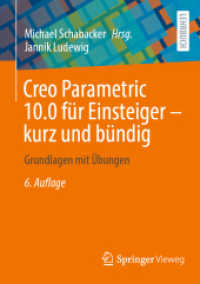Full Description
This book is about methodological aspects of uncertainty propagation in data processing. we need a pseudo-Riemannian space to describe the physical space-time, etc.
To describe and process uncertainty in all such cases, this book proposes a general methodology—a methodology that includes intervals as a particular case.








